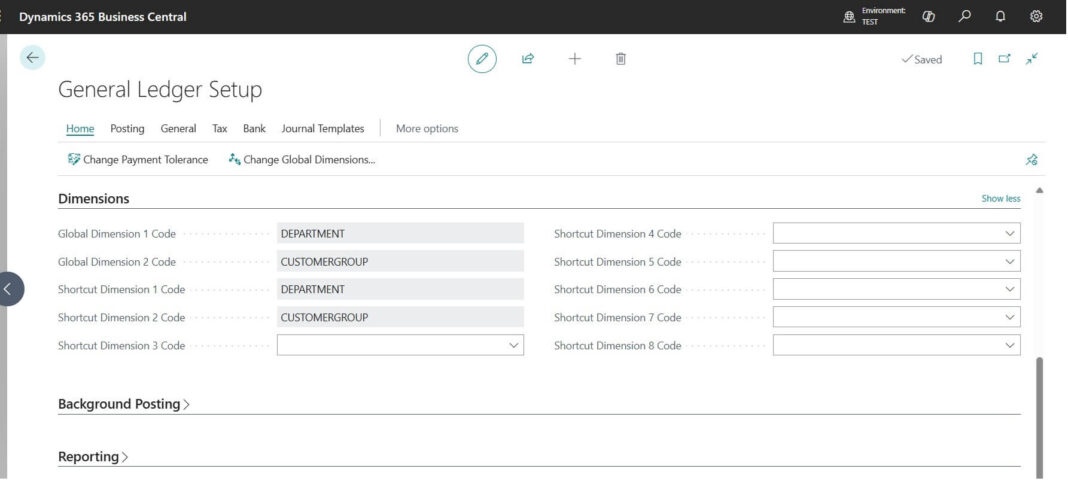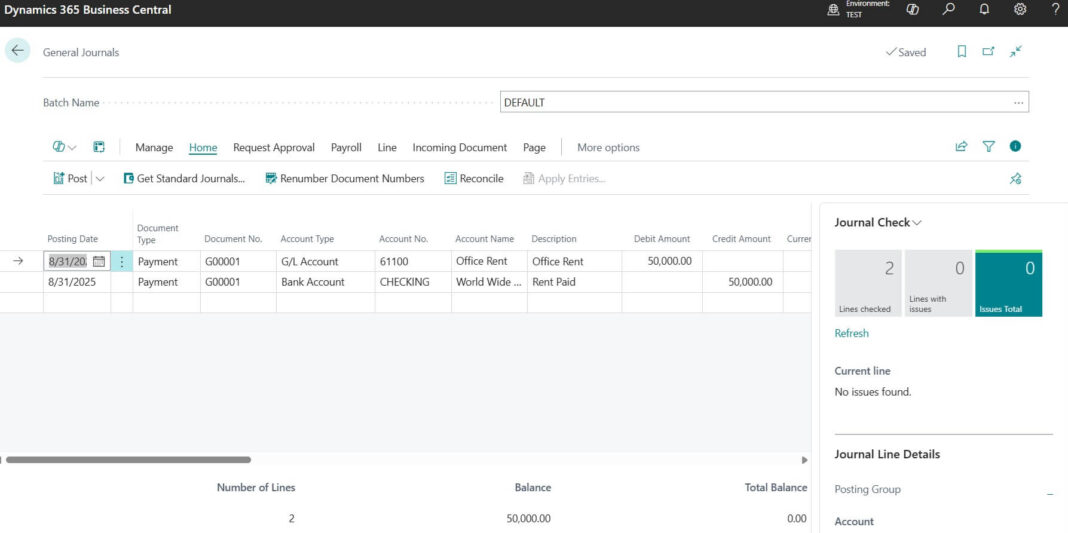If you start using Microsoft Dynamics 365 Business Central, one of the most powerful tools you will discover is Dimensions. They help you track, analyze, and report financial data without creating a complex Chart of Accounts.
In this guide, I will explain what Dimensions are, why they are important, and give you easy examples to understand how to use them.
Table of Contents
What Are Dimensions in Business Central?
In simple words, Dimensions are tags (labels) you can attach to transactions. They allow you to slice and analyze your data in different ways.
Instead of creating hundreds of General Ledger (G/L) accounts for every department, project, or branch, you can use Dimensions to classify and filter transactions.
Why Use Dimensions?
Following are the key reasons to use Dimensions in Business Central or Dynamics NAV or Navision ERP.
- Reduce the size of your Chart of Accounts
- Get flexible and meaningful financial reports
- Track performance by departments, cost centers, projects, or regions
- Compare results across multiple categories
- Support better decision-making with detailed analysis
Types of Dimensions in Business Central
There are mainly 2 types of Dimensions available in Business Central system
- Global Dimensions
- Shortcut Dimensions
Global Dimensions
Global Dimensions are most important dimensions out of 2. Following are the key reason for the same.
- Two main dimensions you set up in Business Central (e.g., Department and Customer Group)
- Always available in reports, G/L entries, and analysis
Shortcut Dimensions
These are optional or less important dimensions compared to earlier one. Following are the key points to consider for this
- Additional dimensions (up to 8) for quick entry in transactions
- Example: Project, Region, Product Line, Salesperson

Real Life Examples of Dimensions
In order to make it easy to understand the concept, please find the examples for these.
Example 1: Department Tracking
Dimension Name: Department
Values: Sales, Marketing, Finance, HR, IT
Once setup this you can run a Profit and Loss (P&L) report by department without creating separate G/L accounts.
Example 2: Branch / Location Tracking
Dimension Name: Branch
Values: Mumbai, Delhi, Bangalore, Jeddah, Washington, Dubai, Abu Dhabi
Helps in comparing revenue and expenses between different locations.
Example 3: Project Tracking
Dimension Name: Project
Values: Project A, Project B, Project C
Useful for service companies, construction firms, or IT companies to analyze profitability by project.
Example 4: Customer Segmentation
Dimension Name: Customer Type
Values: Retail, Wholesale, Online
Understand which customer group is bringing in more profit.
Reports You Can Build with Dimensions
As you know reports are key reason for building dimensions in any ERP. In Business Central you will get accurate report for the following report if Dimensions setup properly
- Profit and Loss by Department
- Balance Sheet by Business Unit
- Sales Analysis by Region
- Expense Report by Project
- Revenue Trend by Product Line
How to Set Up Dimensions (Step by Step)
Now come to the main part of this post, let us see how to setup Dimensions in Business Central.
- Go to Dimensions in Business Central
- Click New -> Enter Dimension Code & Name (e.g., “DEPT” -> Department)
- Define Dimension Values (e.g., HR, Finance, Sales)
- Assign Dimensions to Customers, Vendors, Items, or G/L Accounts
- Post transactions -> Select Dimensions during entry
- Run financial reports with dimension filters


Note: Please perform "Indent Dimension Values" from the option Dimension Values Page -> Actions -> Functions -> Indent Dimension Values. If you have defined the Dimension value type in detail like Heading, Total, Begin-Total, End-Total.
Best Practices for Using Dimensions
Following are some of the best practices for using Dimensions we are suggesting
- Keep dimension names simple and clear
- Avoid too many dimensions -> focus on the key ones that matter
- Train users to always select correct dimensions when posting
- Use default dimensions for customers, vendors, or items to reduce manual mistakes
- Review reports regularly to ensure accuracy
Dimensions in Business Central give businesses the flexibility to analyze financial data from multiple angles without overloading the Chart of Accounts. Whether you want to track by department, branch, project, or customer segment, Dimensions make it easy.
Start small with 2–3 key dimensions and expand as your reporting needs grow.
Frequently Asked Questions (FAQs)
Dimensions are tags (like Department, Project, or Branch) that you can attach to transactions in Business Central. They help classify and analyze data without creating extra G/L accounts.
Global Dimensions: The two main dimensions available across reports and G/L entries (e.g., Department, Customer Group).
Shortcut Dimensions: Additional dimensions (up to 8) that you can use in transactions for detailed analysis.
Using Dimensions keeps your Chart of Accounts simple and clean. Instead of hundreds of accounts for each branch or department, you can use a single account with dimensions to track performance.
Yes, Business Central allows you to set default dimensions for master data like customers, vendors, and items. This reduces manual errors and saves time during posting.
You can create reports like Profit and Loss by Department, Balance Sheet by Business Unit, Sales by Region, Expense by Project, and more.
Global Dimensions: 2 (always available in reports)
Shortcut Dimensions: Up to 8 additional
Beyond this, you can still use dimensions for analysis, but not all will be available in every transaction entry screen.
Stay tuned to NavisionPlanet for more simple, step-by-step functional guides on Business Central.






